
OHweather
-
Posts
4,957 -
Joined
-
Last visited
Content Type
Profiles
Blogs
Forums
American Weather
Media Demo
Store
Gallery
Posts posted by OHweather
-
-
6 minutes ago, largetornado said:
Some disagreement between rap, hrrr, nam, and nam3k. It’s a wake up and see kind oF a day which is typical for the OV.
Considerable uncertainty, largely driven by ongoing/earlier-day convection, is definitely a familiar feeling for the Ohio Valley. There certainly is higher-end tornado potential if a portion of the warm sector is relatively clear and can recover through at least the mid-afternoon, and I feel like that's more likely than not to occur somewhere in the vicinity of central/southern IN, western/southern OH, and perhaps adjacent northern KY. Where exactly that occurs and how large of an area it is are certainly in question.
From a messaging perspective this is kind of brutal...I'd consider northern and even central (especially east-central) OH to be on the fringe. If ongoing convection and clouds clear quickly enough there's still a viable scenario where those areas recover enough to have a threat, and given the amount of shear in place that needs to be messaged. However, it's also possible that little happens on that northeastern fringe. We've already gone all-in with a tornado-driven moderate risk, so while I'm personally hoping for (and sort of leaning towards) nothing too noteworthy happening in the Cleveland metro and my immediate vicinity just south of Cleveland, a total whiff in the northern/eastern half of Ohio would be a strike against public trust in the severe wx forecasts.
-
Some random thoughts based off of the 0z NAM and HRRR...how quickly morning convection exits and allows the warm front to start lifting, along with if convection starts getting pretty widespread in the Ohio Valley by mid-afternoon, which would further limit northward/northeastward moisture return and recovery, are both major sources of uncertainty regarding the northeast extent of the tornado threat. Also, models are still trending slower/west with the low and jet streak.
I think the northern/northeastern portion of the higher tornado probs should be trimmed, perhaps notably, and the overall highest tornado probs shifted a bit farther SW. We'll see what the rest of the 0z models show and what the initial day 1 outlook comes up with.
-
 3
3
-
-
16 minutes ago, cyclone77 said:
Broyles did the first day2 outlook early this morning, so wasn't surprised to see a major correction with the midday update.
Good luck and be safe to all you guys out east tomorrow, looking pretty volatile.
Broyles has gotten better over the years and usually the SPC is pretty good about not whipping around the outlooks too much, but I don’t think anyone was very happy with the initial Day 2 outlook this morning to say the least
-
-
A large and moist warm sector with well-established return flow beneath a remnant EML plume, along with the exit region of a ~100kt 500mb jet streak nosing into the warm sector during the afternoon and evening, is a very concerning synoptic signal in IN/OH/possibly northern KY and adjacent areas. In all likelihood the 850mb flow will be pushing or exceeding 50 knots as well. There is some uncertainty regarding the degree of destabilization farther north, how backed the surface flow is, and the exact convective evolution per CAMs.
My gut feeling is that if AM clouds/rain get out of the way that the strong kinematics and rich warm sector could allow for rapid recovery (as we saw on March 14th), and the strengthening nature of the surface low should back the low-level flow more (along the lines of the NAM/HRRR/RRFS, as opposed to the ARW and to some extent NSSL which are a bit more paltry with the low-level backing and resultant SRH). Shear vectors oriented about 45 degrees to the cold front should lead to a period in which discrete or semi-discrete right-moving supercells are favored before growing upscale.
This area-averaged HRRR sounding from a chunk of NW/central OH ahead of the supercells it has at 22z tells us there's very high-end potential if everything comes together correctly:
-
 1
1
-
-
On 3/18/2024 at 8:34 AM, nwohweather said:
How difficult was tracking this in the office? Findlay/Tiffin are in a bit of a radar hole and until they got a little more easterly it wasn’t the easiest rotation to discernThe long-tracked supercell that started near Findlay and later produced the EF-2 in Crawford and Richland Counties was actually not too bad to track all things considered. Regarding the radar coverage there, you are entirely correct. Several years ago they added a supplemental lower radar tilt on a number of 88D radars (in most cases, 0.2 or 0.3 degrees) to attempt to help give better low-level radar coverage to more areas...the CLE radar was one of those but due to beam blockage our supplemental tilt is 0.4 degrees. We turned it on as that cell developed west of Findlay and it lowered our lowest beam height from slightly over 10k feet to slightly over 9k feet

Regardless of the poor radar coverage, it helped that when the cell was that far away in poor radar coverage that it was light out and we had several people looking at it. The initial Tornado Warning felt slightly flimsy...it was a marginally strong-enough couplet at 9-10k feet, and given it was a discrete supercell in an environment favorable for tornadoes (the effective sig tor parameter was 2-3 at the time) the course of least regret was to go with a TOR. Immediately after that was issued we had a trained spotter call from just west of Findlay with a persistent rotating wall cloud (definitely enough to warn on in an environment favorable for tornadoes if radar is sampling a mesocyclone with the storm). That spotter called back off and on, we also had a few other public and spotter calls as it moved across Hancock and into southwestern Seneca, were streaming county dispatches on broadcastify (law enforcement was reporting funnels and possible tornadoes), and had HAM radio operators in the office who relayed a couple of reports from other HAM radio operators out in that area. Despite the poor low-level radar coverage, we were fairly confident it was trying hard (but probably not putting down anything too strong or persistent) from just east of Findlay into southwestern Seneca County. We finally confirmed an EF-Unknown tornado from far eastern Hancock into southwest Seneca. It's possible there were brief touchdowns before and after this, but this was the area where we had multiple, firm eyewitness accounts (with roads/directions clearly listed and consistent among reports) along with multiple pictures and a video of a tornado in a field.
We did not hear anything concrete for a chunk of time is it moved across southeastern Seneca into extreme northeastern Crawford County despite a relatively decent couplet through there (it's very sparse in there and it was starting to get pretty dark...we also found no damage in that area so it likely wasn't quite producing or was just producing very weak/brief stuff in fields). By the time it produced the EF-2 in northeast Crawford/northwest Richland the radar coverage was better (we were hitting it at <5k feet by then) and it did briefly have an intense couplet and definite TDS, which allowed us to go with "radar confirmed" wording in the warning despite still not getting any concrete reports. We were on the fence regarding going with the "particularly dangerous situation" or "large and extremely dangerous tornado wording" in the warning (which is intended for high-confidence, potentially strong ongoing tornadoes but is a level below a Tornado Emergency, which is reserved for high-confidence and likely violent ongoing tornadoes) and finally got a call from an EM, who relayed a report from a fire department of a large (they said "half mile wide" though it was more like 250 yards) tornado currently on the ground, at which point we went with the higher wording. From there the tornado quickly lifted as the storm appeared to cycle and it never produced after that.
NOW, as for the cell behind that, responsible for the (unwarned) EF-1 tornado southwest of Jenera in Orange and Van Buren townships...that was just annoying and is very symbolic of our challenges along I-75 (especially in Wood and Hancock...the Detroit radars can help with Lucas). The storm did not look impressive at all on radar, did not produce any upstream reports of anything close to tornadic in Allen County, and then dropped an EF-1 in Hancock. We heard about it pretty quickly and issued a warning when we got multiple reports of a tornado on the ground but had already missed it. It's annoyingly common that marginal looking storms on radar west of I-75 are unwarned and don't generate reports and then all of a sudden produce reports when they hit more population along I-75.
On 3/18/2024 at 5:58 PM, TheWeatherPimp said:The Winchester Tornado hit very close to home (well it was my home). The house I grew up in was destroyed and my family's houses were less than 2 blocks from the tornado. They were very lucky and I feel extremely relieved. I was on the phone with them yelling at them to get in the bathrooms and cover themselves with blankets and pillows. It was nauseating. But I'm so thankful they are all okay.
It sounds like the NWS Indianapolis has finalized the rating of the Winchester tornado as an EF3. To be honest, I truly thought they might push it over the threshold based on some of the photos I've seen but I haven't seen the damage in person and won't until later this week.
I'm glad to hear that your family made it through but am sorry to hear about the house you grew up in. I was a little curious to see if that may get an EF-4 rating. It seemed like the only damage truly in question was the Taco Bell...the expected wind speed for that damage indicator (complete destruction of a small retail building) is 167 MPH (EF-4) but they went 165 MPH (EF-3). I had seen one or two pictures of what looked like actual bolts ripped from the foundation (which would be proper construction) but also saw several more pictures where it appeared to just be straight nails holding the building to the foundation (which will give way much quicker and don't support an EF-4 rating). I'm curious if they found legitimate construction issues with the Taco Bell (i.e. anchored with nails and not bolts) and kept it an EF-3 for that reason (perfectly valid) or if they thought the Taco Bell was well-constructed but kept it an EF-3 due to a lack of other EF-4 damage indicators (which I have more mixed feelings on, especially in a multi-vortex tornado where the strongest winds will occur in very small suction vortices). Right or wrong, it's seemingly very difficult to get a higher tornado rating if it's just one damage indicator that supports it unless the one DI is very solid, and there were other structures around the Taco Bell that weren't really in consideration for the higher rating. I try not to get caught up in the rating debate too much because ultimately it's the people who lost loved ones and/or had their lives turned upside-down that really matter, but there's uncertainty in a lot of stronger tornado ratings...I feel like the burden on proof for a higher rating is placed on the tornado when they decide the final rating when there’s uncertainty and could go either way (if that makes sense).
-
 3
3
-
 3
3
-
-
32 minutes ago, Chinook said:
There were several photos and eyewitness reports of a tornado east of Findlay, north of Vanlue and into Seneca County near Alvada and southwest of New Riegel. Finding damage has been difficult in that area. Stay tuned for some sort of final assessment of that area.
But yes, the confirmed EF-1 in southwest Hancock County was with the next cell that came in behind the tornado warned cell.
-
22 hours ago, RCNYILWX said:
Re. the SPC outlooks yesterday, took a hindsight look at yesterday's 12z HREF plus the Nadocast Twitter feed.
A good case can be made that SPC should have issued a 10% hatched tor in the general vicinity of the area affected by strong tornadoes, by the 1630z or 20z update.
Plenty of boxes were checked environment wise in the HREF mean fields, plus some of the neighborhood and paintball UH probs.
The 24-hour STP based calibrated tornado probs had a spot of 10% right near one of the strong tornado tracks.
Since they had a slight with 5% tornado probs, it wasn't an egregiously underdone forecast. 8/24/16 is a much better example of that when doing hindsight assessment of the day's SPC mesoanalysis fields.
Sent from my SM-G998U using Tapatalk
This case is a good example of why conditional intensity outlooks for severe wx, which are in the works, will be beneficial. SPC didn't seem sure if there'd be recovery behind the morning-early afternoon round of convection, so the outlook probabilities (which are unconditional) could theoretically only be so high...however, if the airmass recovery happened the shear profiles and expected storm mode were quite favorable for tornadoes, so the conditional potential for stronger tornadoes was higher than the unconditional outlook probabilities may have conveyed. Unfortunately, there isn't a great way to message that with the current paradigm outside of hoping someone at a WFO is paying enough attention and is confident enough to ring that bell when they are looking at a pretty run of the mill 2-5% tornado outlook.
Is there an argument that with an EML, very strong wind fields, and decent CAM agreement that we would recover that perhaps the SPC should've just bought into the recovery more and gone with higher probs? Yes I'd say that argument is there, as my experience is that you usually don't struggle to recover (and that the CAMs usually do quite well) when there's stronger forcing/shear and an EML nearby. I'd give a pass before the 1630z outlook though because the recovery behind earlier convection is always difficult to gauge and it was only mid-March, and even at 1630z perhaps it was too early to truly have confidence in sufficient airmass recovery/destabilization. By 20z I'd say given the CAM agreement and observational trends that higher probs were probably pretty easily justified. By then you're almost into the watch stage though so the gain isn't a ton even if they did go with higher probs in that outlook.
A handful of significant tornadoes with fatalities occurring in a 2-5% tornado outlook is not ideal, though I agree that there have been worse forecast bursts before. I did not wake up Thursday morning thinking I'd issue a PDS Tornado Warning that day. By mid-late afternoon we were locally getting quite concerned about the potential severity of any storms that made it into our southwestern CWA that evening and ended up with an EF-2 (along with an EF-1 and what will probably go in as an EF-U) out of it. Eastern IN into western and central OH, largely out of the CLE CWA, really took it on the chin compared to us though.
-
 2
2
-
 1
1
-
-
Have been out at Punderson the last hour or so. Measured 6-7” here with occasionally moderate snow still ongoing. Roads actually aren’t bad out here…gotta love fluffy daytime snow in March. Had about 2” at home when I left.
-
12 minutes ago, NEOH said:
3” of snow overnight. Looks like mid winter out there. Was really hoping we we were done with this.
The beauty of it is it'll be in the 60s Tuesday - Friday! So this won't last long. As I'm sure everyone is shocked to hear, I will always root for the snow, but I've also enjoyed some of these very mild temperatures and look forward to them returning quickly.
The band that dropped those 2-3" amounts in parts of Cuyahoga and Geauga with a surface trough axis fell apart before coming into here, I have about 0.5" so far. We should see WNW to NW flow lake enhancement set-up quickly through mid-morning, which will focus on the higher terrain, and then subside quickly this evening.
-
Bit of an out of nowhere kind of lake enhanced snow setup for Sunday. Certain things that look good, a few question-marks. A closed low dropping across eastern Lake Erie into northern PA on Sunday is a good start synoptically. Conditions maximize for several hours downwind of Lake Erie from mid-late morning through much of the afternoon tomorrow...with favorable conditions lasting a few hours longer into the evening farther east into NW PA. In this window, forecast soundings show the unstable layer over the lake deepening into the DGZ as EL heights climb, with an isothermal layer and weak synoptic lift above the unstable layer giving a period of rather deep snow growth. It'll snow pretty good in the upslope areas for several hours as this happens. Synoptic moisture pulls away quickly into Sunday night with temperatures aloft starting to warm too, so expect snow to wind down pretty quickly into Sunday night.
It's a somewhat brief window and won't be super cold, with the best snow definitely happening during the daylight on Sunday in mid-March. I still think it'll accumulate but a little colder or more snow falling at night would've been ideal. I think in northern OH, a lot of areas from north central OH points east will see 1-3" of snow, increasing to 2-4" in the metro area and hills of the secondary snowbelt and 3-6" across the higher terrain of the primary snowbelt. Less right next to the lake. It's certainly possible that the preferred WNW flow lake enhanced upslope areas in eastern Cuyahoga and northern/central Geauga see a small area of 6-8" type amounts. Into PA the snow probably will also focus in the higher terrain inland, though with a slightly longer duration and more terrain (and slightly more favorable soundings overall) so I think it's a more solid 6-10" with perhaps some locally higher amounts in the higher terrain of NW PA, especially in the eastern half of Erie County extending into SW NY. To me this feels like a warning event for inland PA and more of an advisory event for the NE OH snowbelt (despite potential for a local 6-8" bullseye, I don't think it'll be super impactful), but the watch is out for Geauga so maybe you'll get a warning there. I'm off this weekend so it'll be nice to just watch it snow tomorrow. Even outside of the snowbelt, with the synoptic lift, WNW flow, and some Lake Michigan moisture there should be some decent snow showers with light accums all the way down towards Mansfield points east, so everyone should get at least a bit of snow.
-
Another 0.8” of fluffy snow during the day in Macedonia. My total is 0.8” of system snow and 3.0” of lake effect. A minor miracle this winter.
-
Had about 0.8” from the synoptic snow and another 2.2” from LES overnight through 7:15 when I measured. A burst just dropped 1.5” in about half an hour at the office.
-
While my optimism for the extended range has completely faded, it's worth noting that Saturday has the potential to be interesting for lake effect snow from in and around the Cleveland metro points northeast.
-
The trend over the last few days on the ensembles for the last few days of February has been awful. Trending to a -PNA/+EPO and at best a neutral AO and NAO pattern. So the eastern 2/3rds of the CONUS will trend mild to end this month as cold gets scoured from Canada. That’s not to say it can’t or won’t snow at some point in March, but we’re done with anything sustained at this point. The active stretch in January was fun. The rest has objectively sucked, which is how winters seem to go anymore.
-
On 1/19/2024 at 5:57 PM, LakeEffectOH said:
OHweather,
A little break from the current snow event...

What are your thoughts about the recent crash in snowfall totals measured at CLE?
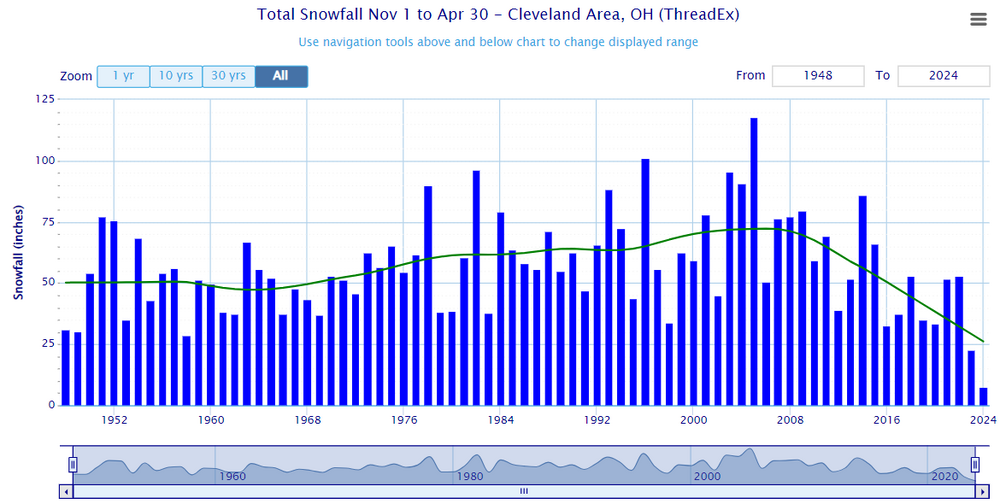
Link: https://xmacis.rcc-acis.org
Here are some of my thoughts on possible contributing factors:
Recent tendency of the MJO to linger in the "Bad phases" (4-7); The changes in the Indo-Pacific warm pool could be a factor in this.
Expansion and warming of the Indo-Pacific Ocean:
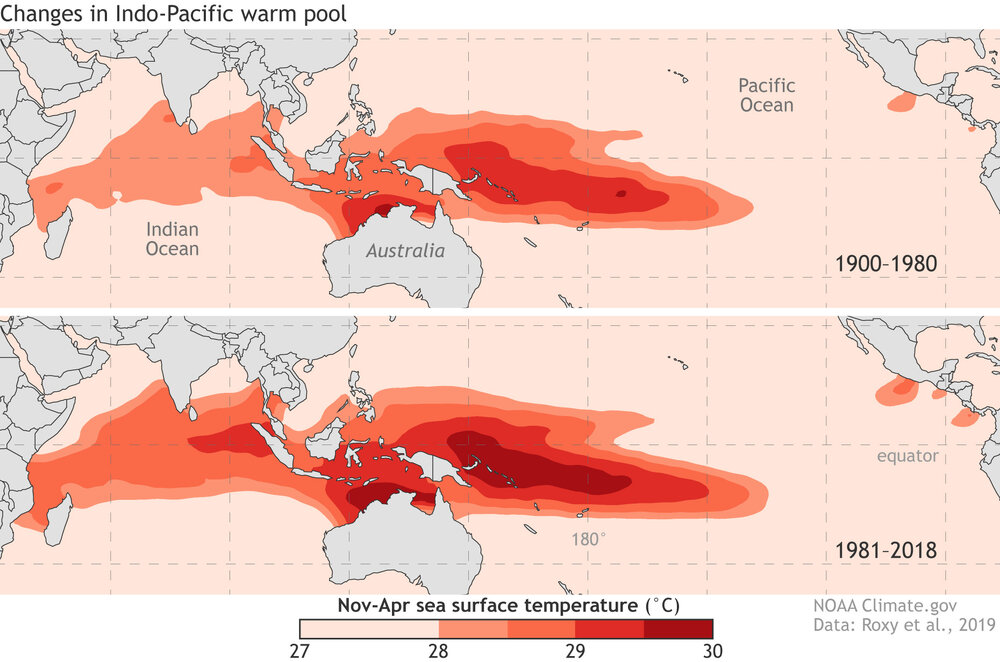
A strongly negative PDO over the past several years:
Link: https://www.worldclimateservice.com/2021/09/01/pacific-decadal-oscillation
A greater tendency of the winter NAO to be positive, especially in the past 10 years, (circled in green):
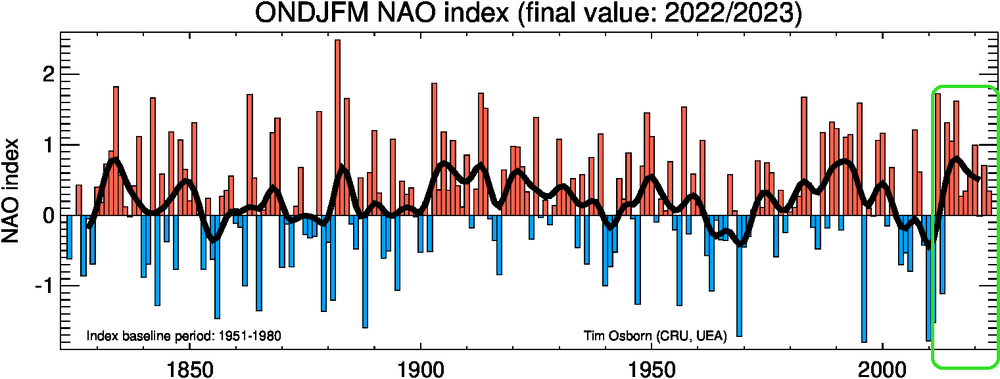
Link: https://crudata.uea.ac.uk/cru/data/nao/img/idl_nao_base1951-1980_ONDJFM_300dpi.png
Of course, there are many other factors, large and small, that are affecting our snow totals. I only hope this isn't permanent because of climate change.
I would be interested in hearing your and anyone else's thoughts.
I am way overdue on properly responding to this...
Our bread and butter for snow is a polar jet dominated pattern with a lot of clippers and lake effect. An occasional panhandle hook/Colorado low and rare low from the Gulf can give us one or two larger storms a winter, but we get snowy seasonal totals when we get stretches where it just snows a lot and adds up. We have not had that for more than brief stretches in recent winters, despite a few impressive synoptic snows.
I think some of the things driving our recent lack of snowy winters are cyclic, while others are related to longer term trends. I think the NAO is somewhat cyclic, with stretches where it's predominantly positive historically. We may be coming out of the ongoing stretch of +NAO...but it has contributed to the recent lack of snow. I also think the PDO is somewhat cyclic. A strong -PDO favors a SE ridge, while a +PDO favors a +PNA. A -PDO is a wetter pattern, but the +PNA isn't always optimal for us (sometimes the trough ends up a bit too far east). A -PDO, though, can just be mild/rainy. The warming Indian-Pacific warm pool is a longer term trend, and it probably does favor more active convection in an area that tends to favor mild weather for us. In some winters, that can result in periods of -EPO blocking which can result in nice Arctic blasts, but it also runs a -PNA and southeast ridge risk. I do think that could lead to an overall decrease in snow averages locally, but I also think there are other factors that are more cyclic and should break more favorably at some point soon.
-
 2
2
-
 1
1
-
-
If you want a local hot take, CLE will more than double their current seasonal total over the remainder of winter. That isn't saying a TON, but I don't think we've seen half our snow yet for the season. The next several weeks will be more wintry. While I'm not convinced it'll be the snowiest pattern ever, it will snow occasionally with generally chilly conditions.
-
After a very busy few weeks (personally and professionally), I myself enjoyed knowing all week this week that there wasn't a legitimate snow chance for me to look at for the foreseeable future. I love snow but I needed to catch up
 . A warm-up after the recent cold snap always seemed likely. The warm-up probably came a few days later than I initially thought and is definitely lasting 1-2 weeks longer than I may have hoped. However, I still think we'll get another decent window of colder weather, likely starting around the middle of February. I do think this upcoming window may favor the eastern U.S. for snow more than parts of the Midwest.
. A warm-up after the recent cold snap always seemed likely. The warm-up probably came a few days later than I initially thought and is definitely lasting 1-2 weeks longer than I may have hoped. However, I still think we'll get another decent window of colder weather, likely starting around the middle of February. I do think this upcoming window may favor the eastern U.S. for snow more than parts of the Midwest.
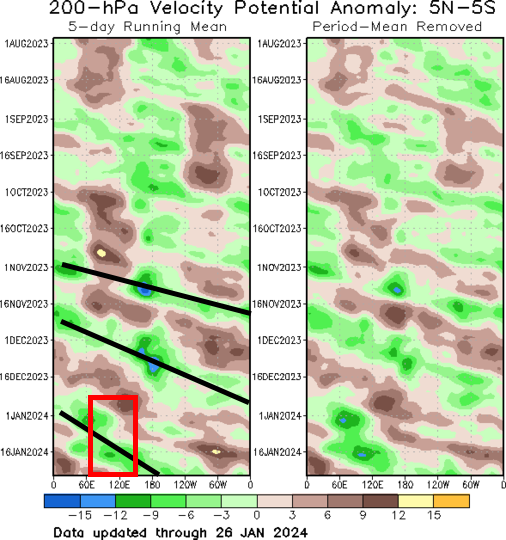
Tropical forcing has been relatively active and important this season, despite the strong El Nino. Note how passages through the western hemisphere in early-mid November and mid-late December were followed by pattern changes a couple of weeks later. The most recent wave has been especially amplified and slow-moving across the eastern Indian Ocean and western Pacific. This almost certainly contributed to the ongoing milder pattern not just being a quick deal. My guess would be that the combination of the collapsed +Indian Ocean Dipole event (that peaked in the fall), weakening El Nino, and ongoing stratospheric warming event earlier this month all contributed to such amplified tropical forcing in these areas.
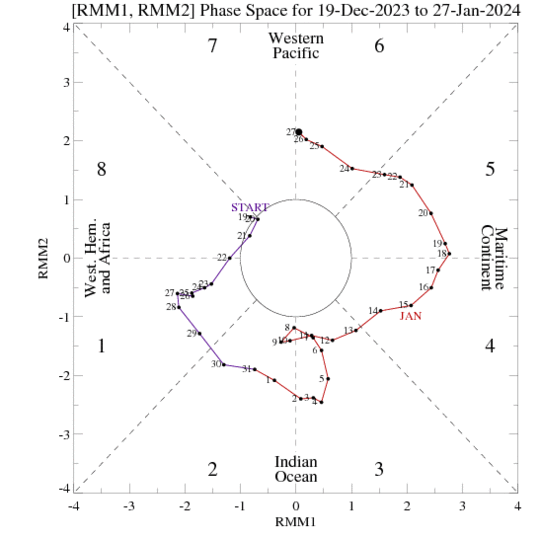
The pattern over the last week and over the next several days definitely has some resemblance to the MJO 5-6-7 composites for mid-late January. The question is, do we get continued propagation through phases 7-8-1? The dynamical models are a mess, the statistical models say yes:
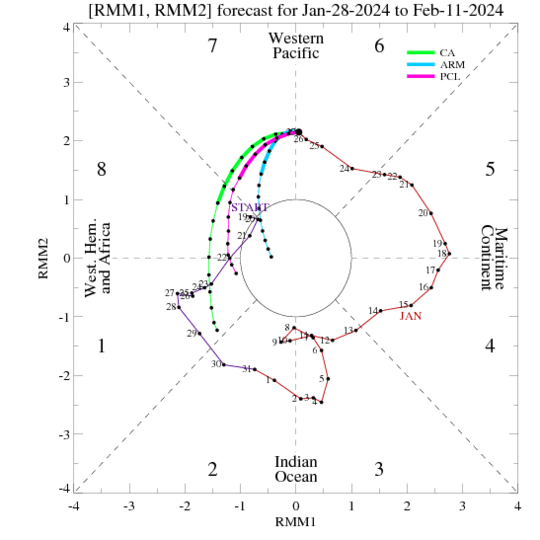
.png.e835bfbc48d65a58e193fc3bdcd4b140.png)
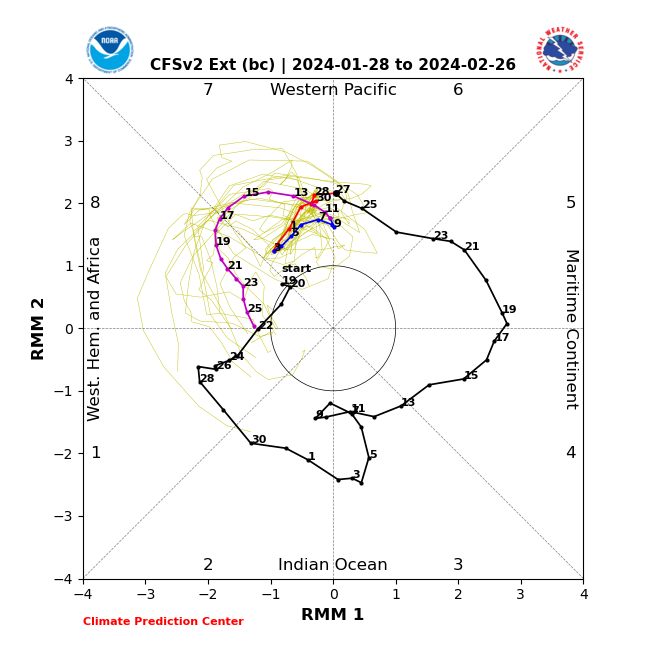
The dynamic models (EPS and CFS the last two images) suggest a very odd/confused signal over the next 10 or so days, followed by what could be a more coherent eastward propagation towards mid-February. The statistical models have a more consistent eastward propagation over the next two weeks. Looking at the actual velocity potential anomaly forecasts from the CFS and EPS:
They suggest continued propagation through the first week of February, with forcing persisting thereafter over the western hemisphere. I would consider tropical forcing to generally be supportive of a transition back to a colder pattern, as it seems like one way or another, most guidance suggests we should see it become more focused over the western hemisphere in February. That supports a +PNA/-NAO. However, I would also consider tropical forcing to be a source of uncertainty as the models seem to be trying to sort out a complex evolution over the next couple of weeks. If we can get the phase 8-1 response the mild weather would not last forever:
I would say the recent and ongoing positive East Asian Mountain Torque isn't necessarily the cause of the ongoing +EPO (I believe the tropical forcing is the cause), but the increased storminess the extended Pacific jet has caused is flooding Pacific air into the northern US and Canada. As the east Asian Mountain torque turns negative over the next week the PNA will briefly trend more negative. However, by mid-February the East Asian Mountain Torque is shown to trend more positive, so any -PNA trend won't last long. With more favorable tropical forcing that should increase blocking along the west coast and into Alaska:
To me, it seems like there's a decent shot that by mid-February we see a more positive PNA and eventually more negative NAO due to the evolution of the mountain torque and tropical forcing. At the same time, our recent SSW event would be due to down well into the troposphere during the second half of February. So if we will see a prolonged period of tropospheric blocking it would begin during the second half of February.
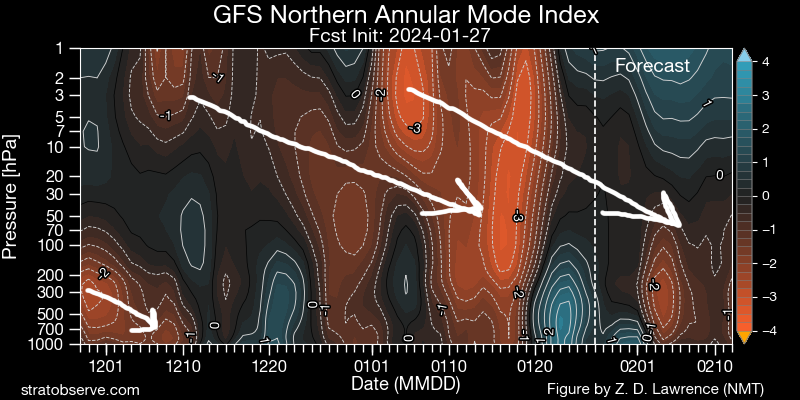
In short, more cold weather should be coming mid to late February. The pattern may end up being more favorable for the East Coast than Midwest overall, but there should be a period of relatively increased snow potential after the ongoing slow stretch.
-
 8
8
-
 6
6
-
-
12 hours ago, Frog Town said:
If my temp is 34 in Toledo and dewpoint is at 32, we've essentially hit our wet bulb max, correct. Not much more room for evaporational cooling is there? HRRR seems to be verifying too cold.
Any chance you were out and about this morning there? I was also worried in the evening when I saw the warm surface temps, but I saw a lot of schools closed and I saw some reports of very icy conditions. Curious to hear how bad it actually was or wasn’t. TOL never got below 34 degrees
-
Went for a hike in the Novelty and Punderson areas this afternoon and drove 422 into Solon around 6 PM. Decent LES out there. Could definitely tell Novelty had gotten a few inches of very fluffy snow today and it was still coming down, especially when I left. The conditions coming into Solon when the LES band was more consolidated were solid, with visibility reduced to about half a mile as dendrites dumped. Snow rates may have been close to an inch an hour, the highway and main roads in Solon were snow packed with a good inch, and side roads and parking lots that were less disturbed looked to have a good couple inches on them.
Back in Macedonia, I picked up slightly over an inch today...giving me a total of 13.7" over the last two days. It hasn't snowed many times this winter but when it has, it has delivered here.
-
 1
1
-
-
I’ve been up in the Mayfield/Highland Hts area this afternoon and there have been some decent bursts of fluffy lake effect.
The scraps overnight at my house brought my storm total up to 12.5”. Much of the area caught up yesterday afternoon through early this morning (although ironically, outside of Erie and Huron which didn’t verify, the warnings I’m least confident in being able to verify are Lake, Geauga, and Ashtabula lakeshore. The Ashtabula lakeshore zone is often hard to verify, but not verifying Geauga in this sort of setup while verifying the entire Cleveland metro would be quite a twist)
-
 2
2
-
-
17 minutes ago, LakeEffectOH said:
OHweather,
A little break from the current snow event...

What are your thoughts about the recent crash in snowfall totals measured at CLE?

Link: https://xmacis.rcc-acis.org
Here are some of my thoughts on possible contributing factors:
Recent tendency of the MJO to linger in the "Bad phases" (4-7); The changes in the Indo-Pacific warm pool could be a factor in this.
Expansion and warming of the Indo-Pacific Ocean:

A strongly negative PDO over the past several years:
Link: https://www.worldclimateservice.com/2021/09/01/pacific-decadal-oscillation
A greater tendency of the winter NAO to be positive, especially in the past 10 years, (circled in green):

Link: https://crudata.uea.ac.uk/cru/data/nao/img/idl_nao_base1951-1980_ONDJFM_300dpi.png
Of course, there are many other factors, large and small, that are affecting our snow totals. I only hope this isn't permanent because of climate change.
I would be interested in hearing your and anyone else's thoughts.
I will take a better look and respond to this over the next couple of days! I have some thoughts but would like to look a bit more/think a bit more on it. CLE hasn't had a snowier than average winter since 2013-14 (though most other sites have had at least 1-2 since), so whatever the cause it hasn't been a trivial stretch of poor winters from a snow perspective.
-
 1
1
-
-
I'll do a measure and clear in an hour or so, but just sticking a ruler into my new snow since 1:20 brings my storm total to right at a foot! What an afternoon. Snow has finally slowed down, but hasn't stopped.
Also, woof:
https://x.com/Shinutsurai1/status/1748454511679582364?s=20
(17" public report from Maple Heights)
-
7 minutes ago, vpbob21 said:
Yeah the models always seem to overpredict lake enhancement this far west. It always seems to develop over Lorain/Medina then moves east from there. Not holding out high hopes for that band coming out of SE Michigan but we'll see.
I always love reading your posts on the long range outlook. Any chance you'll have a new one up soon? The 12z GFS looks about as brutal as it gets. I know I shouldn't put much stock in the 384 hr. GFS but given the state of the MJO and the AO/NAO it certainly looks believable.
I was going to try to put something together over the next few days or week. Have fallen slightly out of touch with the long range on night shifts and with the incoming snow the last several days. A warm up after this cold snap isn't surprising to me, but I'll admit the long range ensembles are not giving me optimism regarding how quickly cold may come back after the warmup.
I remember one event on super bowl Sunday in 2022 with this type of flow when a mesolow formed just east of the Islands and brought several (unforecasted) inches of snow to Erie/Huron Counties. This event gave me some flashbacks to that, but it didn't materialize at all. In that event the lake was mostly frozen but water opened up east of the Islands, whereas this one maybe it's the other way around with more ice there and more open water farther east.

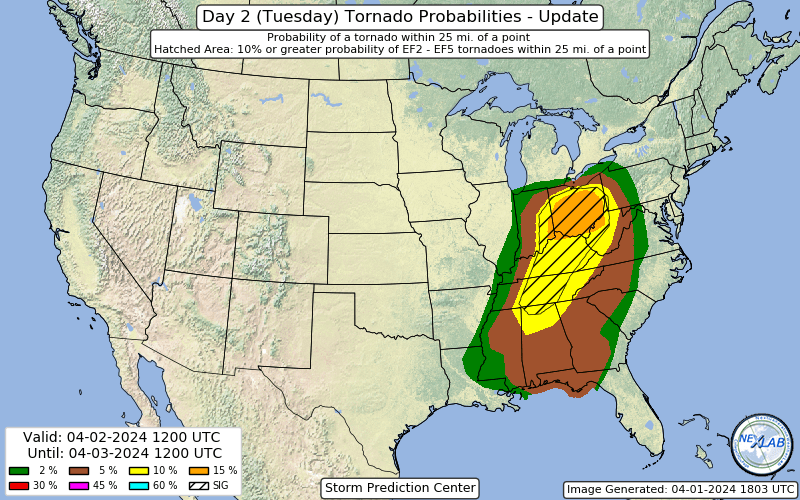
.thumb.png.e6033473972a11cfb96beec61b03304f.png)
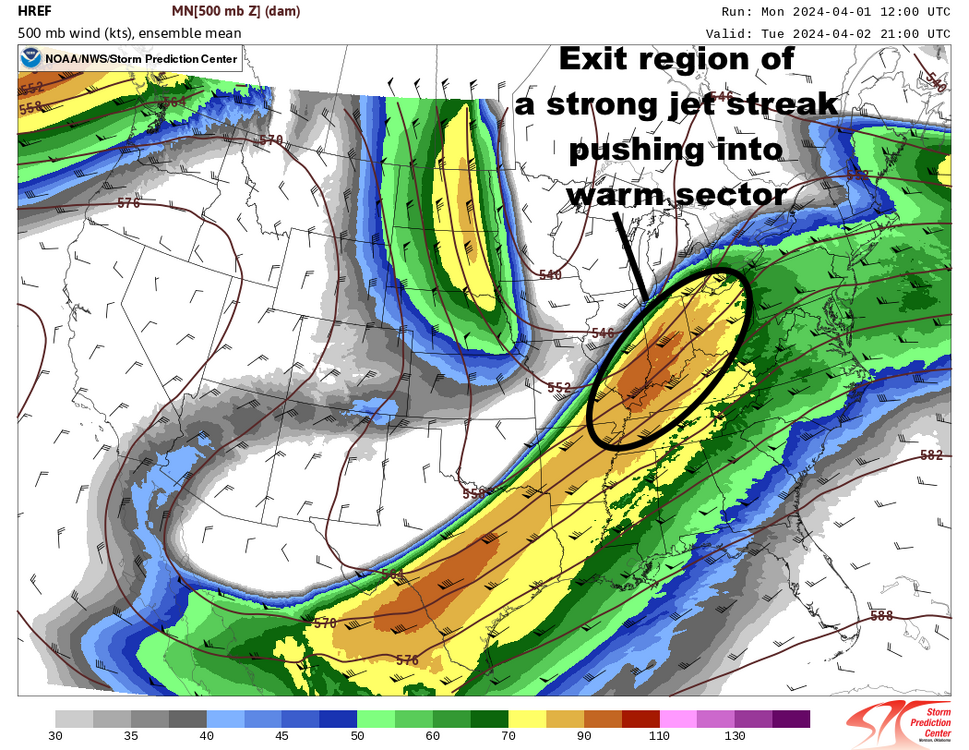
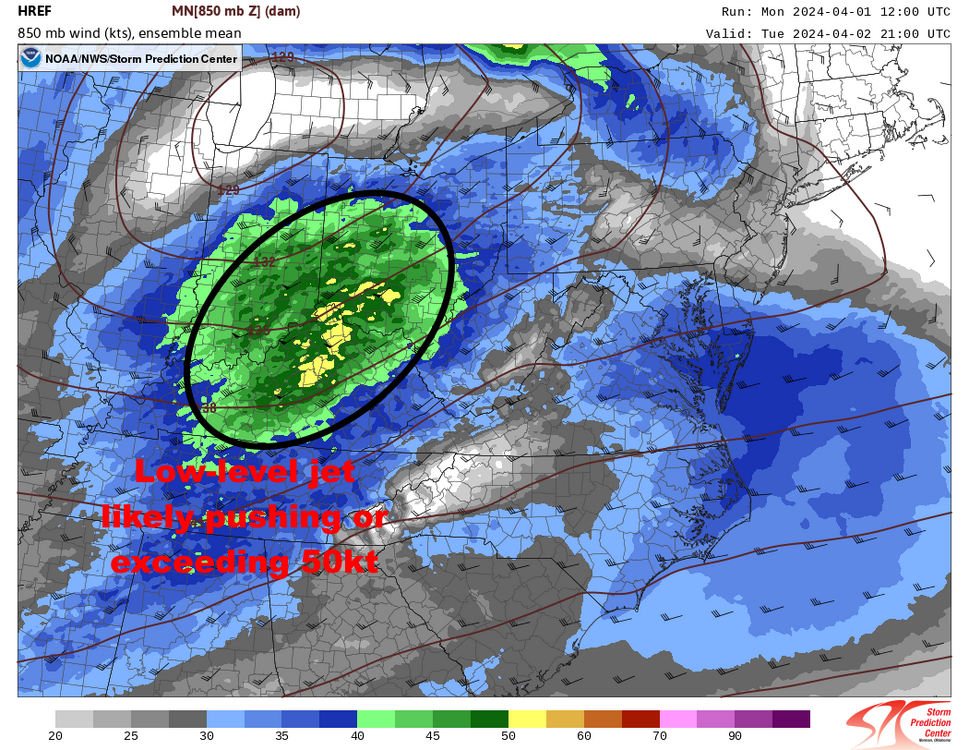
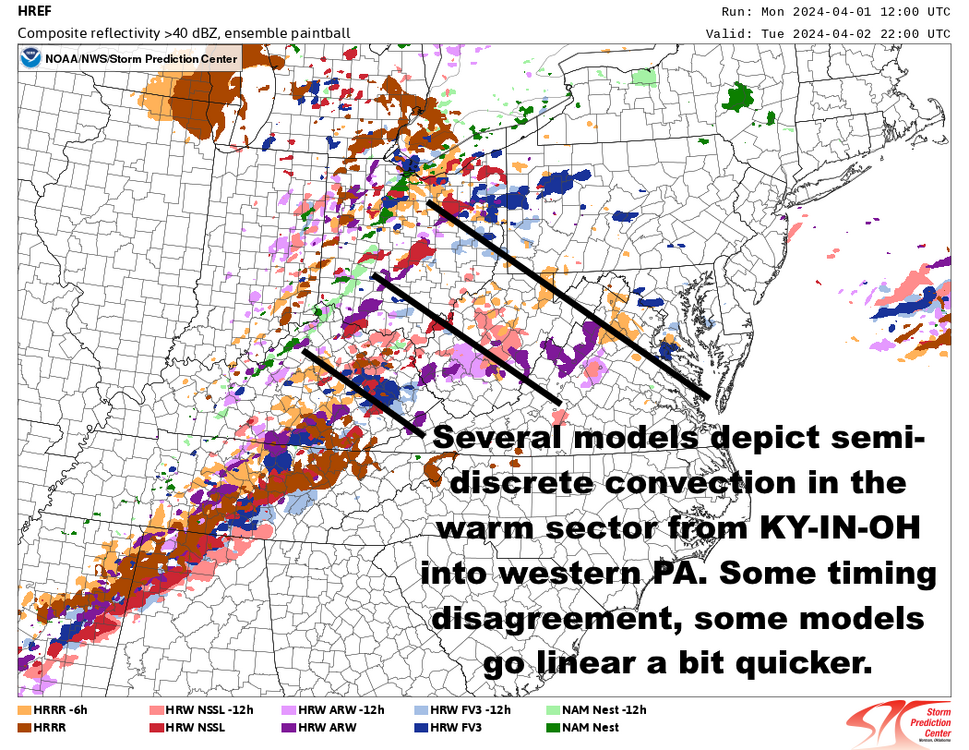
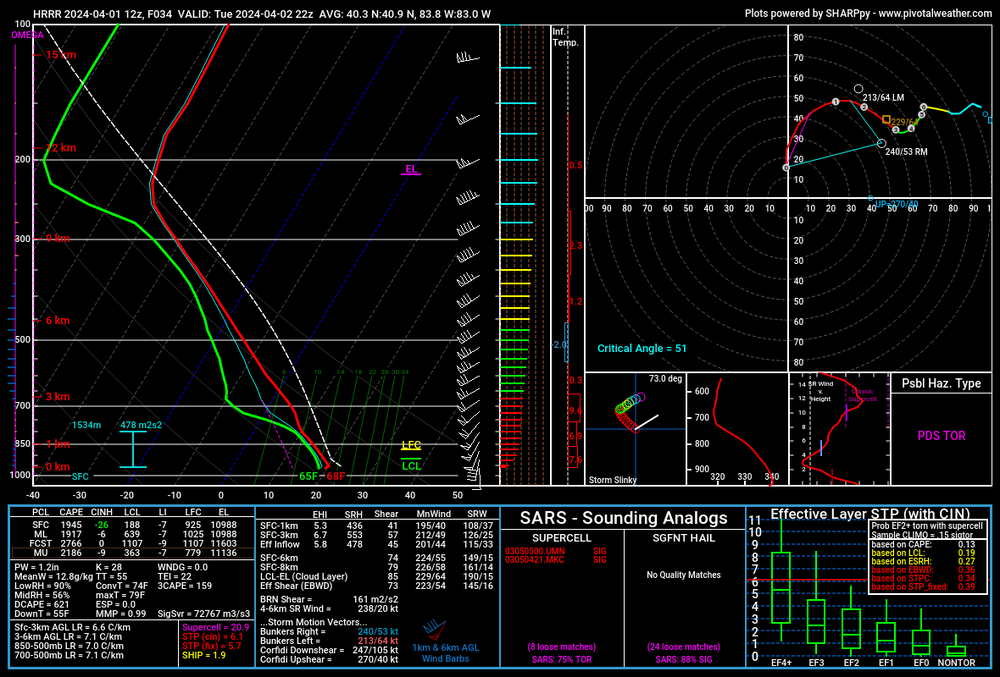
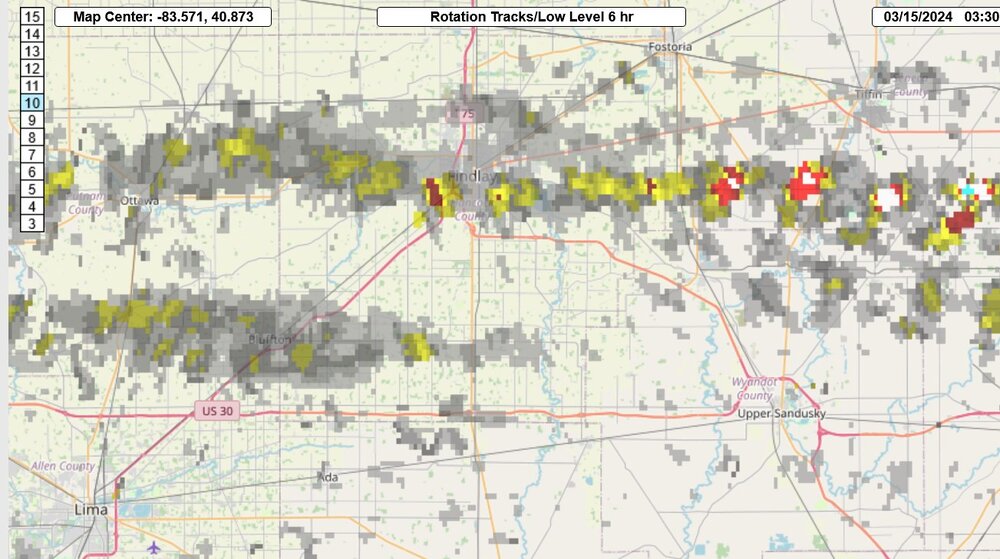
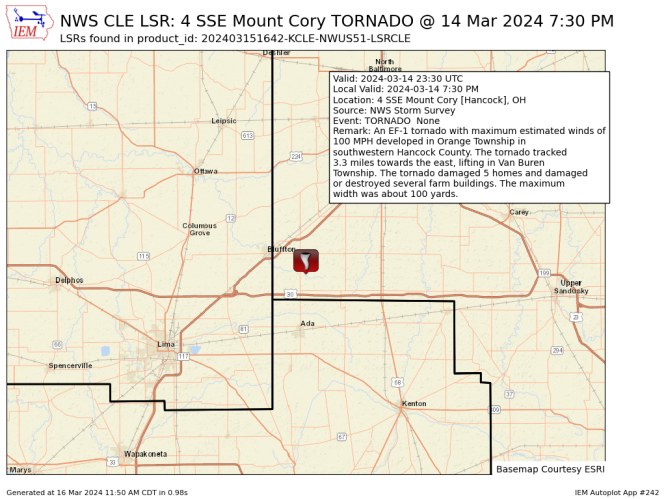
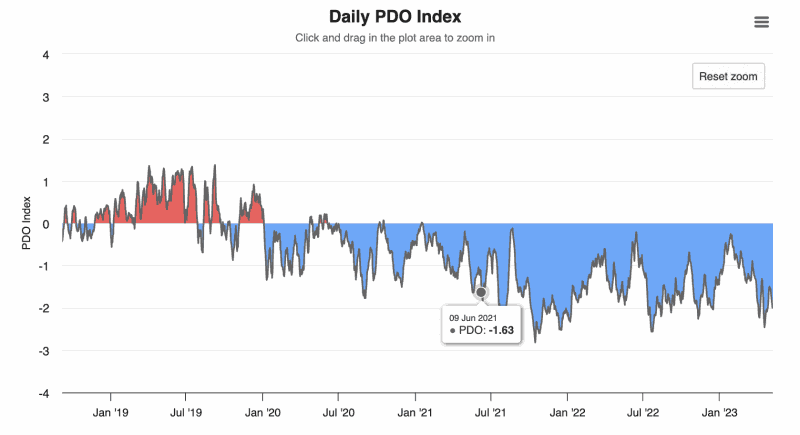
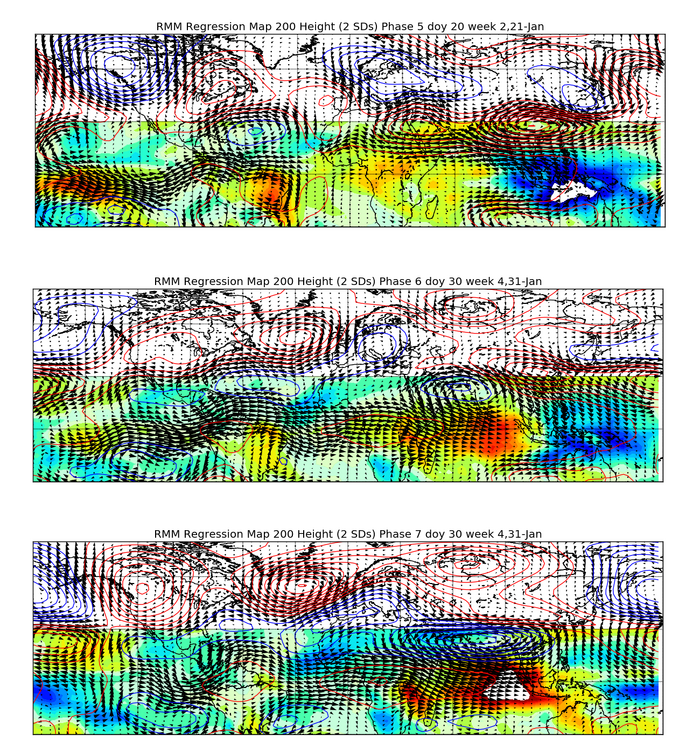
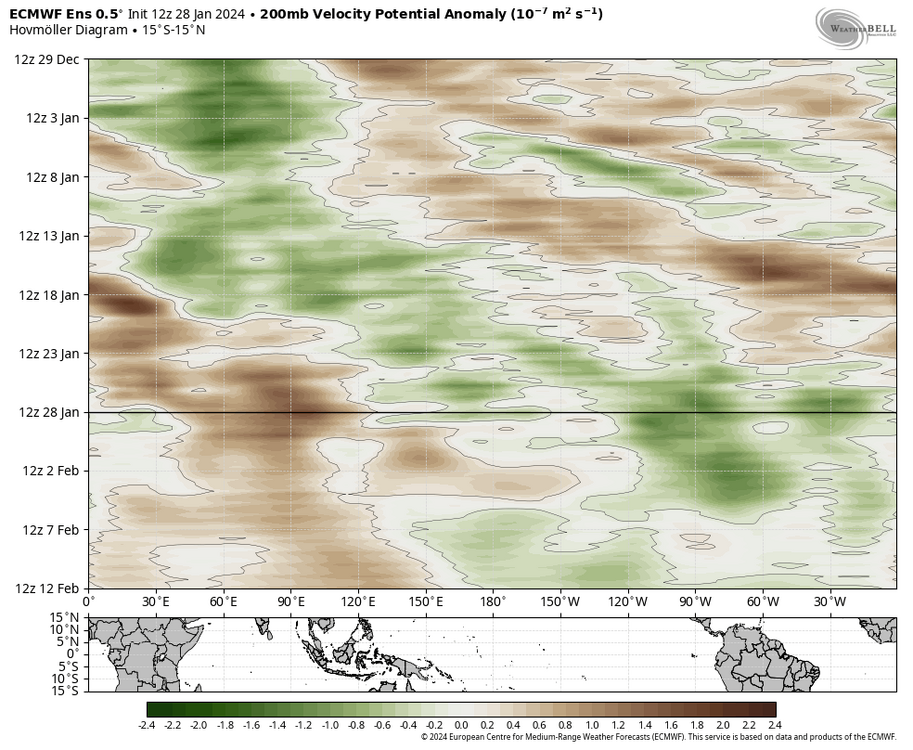
.thumb.png.f7ca9276972b388b97d47c5df3a4bb62.png)
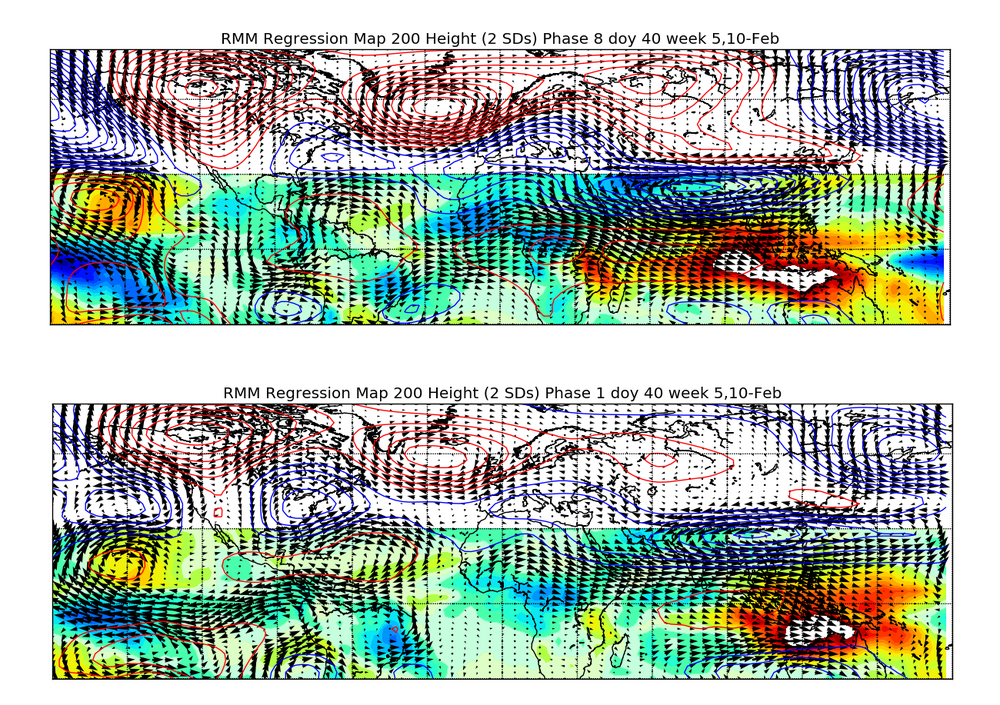
.thumb.gif.f1e8c124ea8dec5e1acdd0b81972a5ec.gif)
4/1-4/2 severe threat (southern portion of subforum)
in Lakes/Ohio Valley
Posted
Yes, my take on the 0z HRRR was that it being more expansive morning MCS in the Ohio Valley, with elevated convection continuing to fire overtop its cold pool through the early afternoon and convection firing in the warm sector and becoming widespread by mid-afternoon, were why it didn't really destabilize north of southern OH. We may have a better lean on how that will play out within the next few hours.
Yes, I assume there was a ton of internal discussion about the outlook. I was off today so can not confirm or deny. It is a tough spot, and the initial day 2 pulling things farther south really made things worse. I do think that the setup can support one or two long-tracked, violent tornadoes, so based on that I can not fault the day 2 moderate risk. If you expect long tracked, violent tornadoes that's more than an enhanced risk. I could perhaps quibble with it being placed so far northeast, but I do think there is a conditional threat in at least the entire moderate and enhanced risk areas so I can't totally fault it either. Some of the messaging I've seen regarding this threat is some of the strongest I've ever seen around here...there is something to be said about being sure before breaking out the strongest possible messaging. I'm both worried about the higher end of the potential and what that could look like (even if it's just one or two really nasty tornadoes) but am very uncertain on where or if we'll see that pan out.